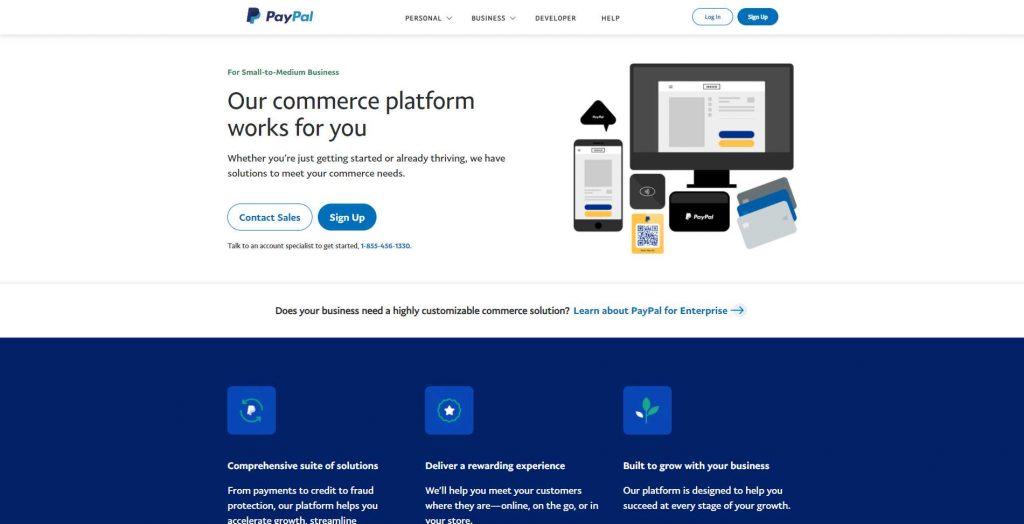As the technology keeps evolving, customers’ expectations towards your business website are also increasing. Not only do they demand convenience, but they also expect your site to protect them from potential harm from various cyberattacks.
A study showed that data breaches exposed 36 billion records in the first half of 2020, influencing most customers’ confidence when doing transactions online. Therefore, business websites need to improve their security measures to ensure the best customer experience and satisfaction.
In this article, we will look at the correlation between site security and customer trust. We will also learn some strategies to creating a secure customer experience on your website.
Site Security and Customer Identity
During customers’ interaction with your business, they might submit their personal information to your website for various reasons, including improving their user experience. However, users can be reluctant to entrust their data to you due to the ever-growing risk of cyberattacks. In 2019, the possibility of data breaches on business websites caused around 3.9% customer turnover. Therefore, online businesses are expected to enhance their cybersecurity efforts to maintain customers’ trust and improve their experience.
In 2019, the possibility of data breaches on business websites caused around 3.9% customer turnover. Therefore, online businesses are expected to enhance their cybersecurity efforts to maintain customers’ trust and improve their experience.
This can be achieved by various methods and strategies that cover multiple aspects, including software, devices, and human resources. What’s more, knowledge of how to create a secure customer experience on your website can help to achieve a positive everlasting online reputation.
How to Create a Secure Customer Experience
There are multiple steps and strategies you can take to protect your website from cyberattacks. Let’s take a look at several methods worth considering when you want to create a secure customer experience on your website.
1. Enable SSL Certificates and HTTPS
Securing your website using SSL certificates encrypts the data transfer between your site and its users. A secured website can be identified by looking at the connection protocol used on its URL. When a site uses SSL, it will have HTTPS in front of its URL instead of HTTP.
As of August 2021, 74.7% of all websites worldwide use HTTPS as their default protocol. Most hosting providers also include SSL certificates in their plans. But in some cases, you might have to setup HTTPS connection for your site manually.
HTTPS protocol is an immediately noticeable aspect of your cybersecurity, and it can highly affect your site’s credibility. Web browsers may warn users when they try to access a site without HTTPS protocol, making them less likely to proceed.
2. Use a Secure Payment Solution
Online transaction is one of the most targeted touchpoints during the customer journey. Hackers can steal sensitive information such as customer’s names, addresses, and credit card numbers during this process. In fact, credit card fraud was the most common type of identity theft in 2019, with over 270,000 cases reported.
Because of that, it is crucial to make sure that your eCommerce uses a reliable and secure payment solution. A good payment gateway should follow strict PCI DSS compliance to provide a safe transaction process for merchants and customers.  Avoid choosing a sketchy payment gateway provider with no established reputation. Opting for big and reputable providers such as PayPal, Apple Pay, or Amazon Pay can help you maintain customers’ trust during the payment process.
Avoid choosing a sketchy payment gateway provider with no established reputation. Opting for big and reputable providers such as PayPal, Apple Pay, or Amazon Pay can help you maintain customers’ trust during the payment process.
3. Obtain Information Security Certification
Your company should have strong data security standards to safeguard customers’ information and provide them with the best user experience. Obtaining an information security certification can be a good idea to further improve clients’ trust in your business.
You might want to consider multiple certifications, including ISO 27001, PA DSS, and the PCI DSS Level 1 Service Provider status. Companies with these certifications are proven to have followed and maintained detailed information security management, which makes them more trustworthy.
4. Secure Infrastructure
Securing your company’s infrastructure can also help protect customers from potential cyberattacks. Hackers can breach your website’s system through multiple entry points, including computers and smartphones used by your employees.
Make sure to limit the use of the company’s devices only for business-related activities. It is also important not to store any unrelated data and files on company computers. Remember to keep all software up to date and change their passwords regularly. Without a clear device usage standard, devices with access to customer’s sensitive information might be at risk of being infected by malware. Consider using asset management software to help you monitor and secure the company’s infrastructure.
Without a clear device usage standard, devices with access to customer’s sensitive information might be at risk of being infected by malware. Consider using asset management software to help you monitor and secure the company’s infrastructure.
5. Create Emergency Plans
Even after implementing multiple security measures, the risk of being exposed to cyberattacks might not disappear completely. Therefore, it is always a good idea to have an emergency plan in case something unexpected happens.
Establish a clear protocol when a potential cyberattack occurs in your system. Encourage your employees to inform the IT personnel as soon as they notice signs of a security breach on their devices. Also, be prepared to contact external and internal stakeholders in critical event handling. Regularly backing up data can also be a good solution to ensure your business continuity. To allow easy access, store the copy of customer’s databases in a separate and secure location such as cloud services. Doing so will let you restore important information when it gets deleted or infected by malware and viruses.
Regularly backing up data can also be a good solution to ensure your business continuity. To allow easy access, store the copy of customer’s databases in a separate and secure location such as cloud services. Doing so will let you restore important information when it gets deleted or infected by malware and viruses.
6. Train Employees
Your employees’ knowledge about cybersecurity plays an important role in ensuring the safety of the company’s critical information. Instilling cybersecurity awareness in your team can help you reduce vulnerabilities and react appropriately when a breach occurs.
Introduce every employee to various threats, including email phishing, malware, and brute-force attacks. Consider conducting regular training and data breach simulation to familiarize the employees with cyberattack countermeasures. Make sure everyone recognizes and understands company policies regarding information security. Training and education can help employees build a sense of ownership and prioritize the company’s data security.
Make sure everyone recognizes and understands company policies regarding information security. Training and education can help employees build a sense of ownership and prioritize the company’s data security.
7. Educate Customers
Let customers know that your business has implemented all the necessary measures to ensure their data privacy and security. By disclosing what system and tools your website uses to fight cyber attackers, it can be easier to gain customers’ confidence and trust.
At the same time, let your customers know about potential attacks that might harm them during their online activities and how to avoid them. This is because a study by Purplesec found that 98% of cyberattacks rely on social engineering that targets customers directly.
Keep in mind that you require the same level of awareness from the company and customers to optimize data security measures. Encourage every party involved to practice cautiousness and do their due diligence to protect information privacy and security.
Conclusion
Nowadays, customers are more protective over their security and privacy when conducting online business. Therefore, companies are required to improve their security measures to fulfill client’s expectations and provide them with the best customer experience.
There are multiple steps, and methods companies can take to protect their site from the potential threat of cyberattacks. In this article, we have looked at seven important ways to create a secure customer experience on your website:
- Enable SSL certificates and HTTPS
- Use a secure payment solution
- Obtain information security certification
- Secure infrastructure
- Create emergency plans
- Train employees
- Educate customers
By demonstrating that your company is serious about safeguarding data privacy, customers can be more confident doing business on your website. Follow the steps presented above, and hopefully, creating a secure customer experience on your website will bring you more business.
